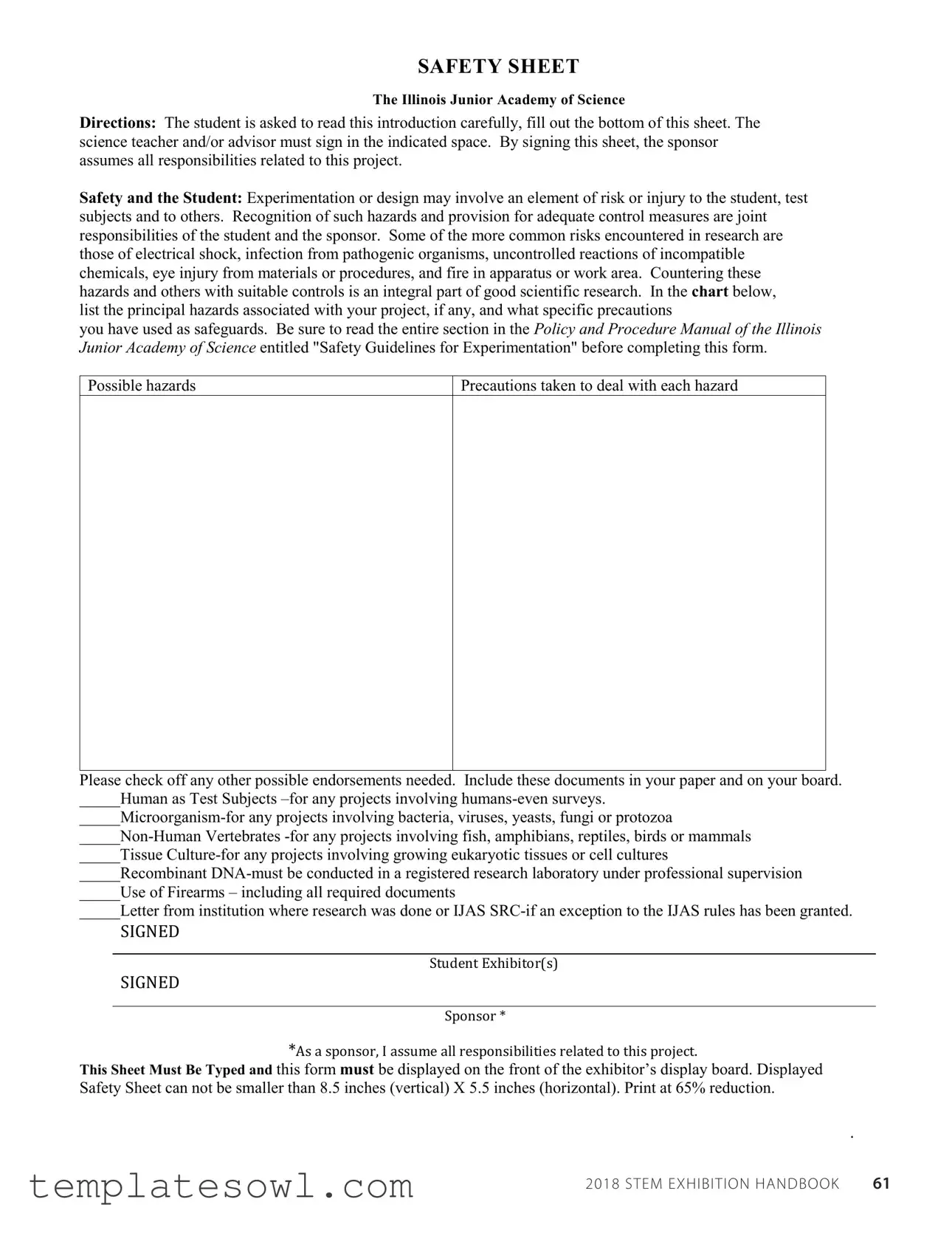What is the purpose of the Safety Sheet for the Science Fair?
The Safety Sheet serves to ensure that students recognize the potential risks involved in their science projects. It requires both the student and a sponsor, typically a teacher or advisor, to identify hazards and outline the precautions taken. This documentation aims to foster a safe research environment for all participants involved in the project.
Who needs to sign the Safety Sheet?
The Safety Sheet must be signed by both the student exhibitor and the sponsor. By signing, the sponsor assumes responsibility for the safety of the project, reflecting a commitment to maintaining a secure and compliant research process.
What types of hazards should be listed on the Safety Sheet?
Students should identify any principal hazards associated with their projects. Common risks include electrical shock, chemical reactions, infection from pathogenic organisms, and potential fire hazards. Recognizing these risks is crucial for establishing appropriate safety measures.
How should students outline precautions taken to handle hazards?
In the designated chart on the Safety Sheet, students must clearly detail specific precautions they have implemented for each identified hazard. This could involve using safety equipment, following proper procedures, or securing professional supervision when necessary. Clarity and thoroughness in this section are essential for effective risk management.
What is the minimum size for displaying the Safety Sheet at the exhibition?
The Safety Sheet must be displayed prominently on the front of the exhibitor's display board. Its dimensions should not be smaller than 8.5 inches vertically by 5.5 inches horizontally. This ensures that it is easily readable and visible to judges and attendees.
Are there any additional endorsements required for certain projects?
Yes, specific projects may require additional endorsements. For example, projects involving human test subjects, microorganisms, or non-human vertebrates necessitate extra documentation. Students should check off any applicable endorsements on the Safety Sheet to ensure compliance with the safety guidelines established by the Illinois Junior Academy of Science.
What should students do before completing the Safety Sheet?
Before filling out the Safety Sheet, students are strongly encouraged to review the “Safety Guidelines for Experimentation” section of the Policy and Procedure Manual provided by the Illinois Junior Academy of Science. This comprehensive resource offers important details regarding safety protocols and helps students understand their responsibilities better.
What happens if a project does not adhere to the safety requirements?
Failure to comply with the safety requirements may lead to disqualification from the Science Fair. It is vital for students to understand the importance of safety in scientific research and to take all necessary precautions seriously. Ensuring compliance protects not only the individual students but also the integrity of the event.
Is it necessary to type the Safety Sheet, or can it be handwritten?
The Safety Sheet must be typed for clarity and professionalism. Handwritten submissions may not be accepted, as typed documents are easier to read and present a more organized appearance. This focus on professionalism reflects the overall standards of the Science Fair.

